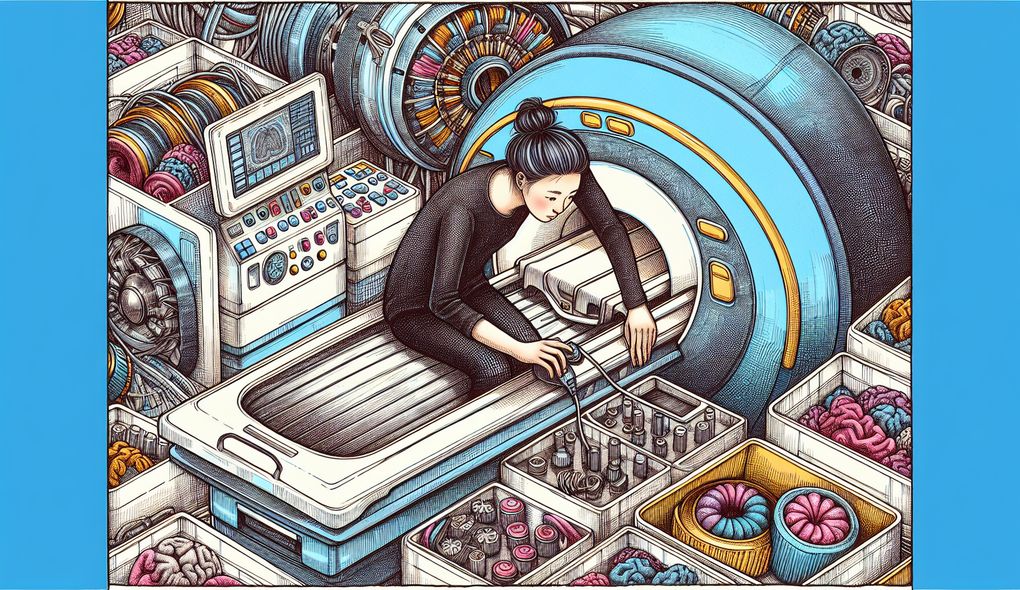What is your understanding of anatomy, physiology, and pathology as it relates to MRI imaging?
INTERMEDIATE LEVEL

Sample answer to the question:
An understanding of anatomy, physiology, and pathology is crucial for an MRI technologist as it directly impacts the imaging process. In my experience, I have studied and gained knowledge on these subjects during my education and training as a radiologic technologist. I understand the anatomy of the human body, including the organs, bones, and tissues, which helps me in positioning patients accurately for imaging. Additionally, I have learned about the physiology of various body systems, such as the cardiovascular, respiratory, and musculoskeletal systems, which allows me to understand the functions and interactions of these systems during MRI procedures. Furthermore, I have knowledge of pathology, including common diseases and conditions that affect different organs and tissues, which aids in recognizing abnormalities in the MRI images and assisting radiologists in diagnosing patients.
Here is a more solid answer:
A comprehensive understanding of anatomy, physiology, and pathology is essential for an MRI technologist to accurately interpret and perform MRI imaging procedures. Throughout my education, I have extensively studied and gained in-depth knowledge of these subjects. In anatomy, I have a detailed understanding of the human body's structure, including the organs, tissues, and skeletal system. This knowledge enables me to precisely position patients for optimal imaging and identify any anomalies in the images. Moreover, my understanding of physiology allows me to comprehend the functioning of various body systems, such as the cardiovascular and respiratory systems. This knowledge helps me recognize any physiological changes that may affect image quality or patient safety during the procedure. Additionally, I have studied pathology, which equips me with the ability to identify and differentiate between normal structures and pathological abnormalities in MRI images. This understanding enables me to assist radiologists in making accurate diagnoses and providing appropriate patient care.
Why is this a more solid answer?
The solid answer provides more specific details and examples of the candidate's understanding of anatomy, physiology, and pathology as it relates to MRI imaging. It highlights their in-depth knowledge gained through education and explains how this knowledge helps them in various aspects of MRI imaging. However, the answer could benefit from further elaboration on specific pathologies or diseases that the candidate is familiar with and their role in diagnosing and treating patients.
An example of a exceptional answer:
A thorough understanding of anatomy, physiology, and pathology is crucial for an MRI technologist to ensure accurate and high-quality MRI imaging. During my education and extensive experience as an MRI technologist, I have developed an exceptional knowledge base in these areas. In anatomy, I possess a detailed understanding of the structure and spatial relationships of the human body, including complex organ systems such as the central nervous system and the cardiovascular system. This expertise allows me to precisely position patients and optimize imaging protocols for specific anatomical regions. Furthermore, my profound knowledge of physiology enables me to recognize and adapt to the physiological changes that occur during an MRI procedure, ensuring patient safety and image quality. Additionally, my comprehensive understanding of pathology equips me to identify both common and rare pathological conditions visible on MRI images. I am well-versed in recognizing signal intensity alterations and abnormal morphological features associated with various diseases, such as tumors, inflammation, and neurological disorders. This expertise allows me to collaborate effectively with radiologists in the accurate interpretation and diagnosis of MRI findings, leading to optimal patient care and outcomes.
Why is this an exceptional answer?
The exceptional answer goes beyond a standard understanding of anatomy, physiology, and pathology and demonstrates a deep knowledge of these subjects. The candidate showcases their expertise in complex anatomical structures and systems, the ability to adapt to physiological changes during MRI procedures, and their proficiency in identifying a broad range of pathological conditions visible on MRI images. The answer also emphasizes the candidate's collaborative skills with radiologists for accurate interpretation and diagnosis. However, the answer could be enhanced by providing specific examples of complex pathologies encountered or highlighting any additional certifications or specialized training in these areas.
How to prepare for this question:
- Review and refresh your knowledge of human anatomy, paying attention to anatomical landmarks and different organ systems. Understand their spatial relationships.
- Study the physiology of various body systems and their functioning. Familiarize yourself with common physiological changes observed during MRI procedures.
- Develop a comprehensive understanding of common pathological conditions and their manifestations on MRI images. Stay updated with the latest advancements and research in the field of MRI pathology.
- Stay abreast of current literature, research articles, and case studies related to anatomy, physiology, and pathology as it pertains to MRI imaging.
- Participate in advanced training programs, conferences, and workshops to expand your knowledge and expertise in anatomy, physiology, and pathology as it relates to MRI imaging.
What are interviewers evaluating with this question?
- Anatomy knowledge
- Physiology knowledge
- Pathology knowledge

